General description
We are committed to bringing you greener alternative products, which adhere to one or more of The 12 Principles of Green Chemistry.This antibody is Preservative-free, produced without the harm or sacrifice of animals and exceptionally stable to allow for ambient shipping and storage if needed and thus aligns with "Waste Prevention", "Designing Safer Chemicals" and "Design for Energy Efficiency". Click here for more information.
ZooMAb® antibodies represent an entirely new generation of recombinant monoclonal antibodies.Each ZooMAb® antibody is manufactured using our proprietary recombinant expression system, purified to homogeneity, and precisely dispensed to produce robust and highly reproducible lot-to-lot consistency. Only top-performing clones are released for use by researchers. Each antibody is validated for high specificity and affinity across multiple applications, including its most commonly used application. ZooMAb® antibodies are reliably available and ready to ship when you need them.
Specificity
Clone 1F20 is a ZooMAb® Rabbit recombinant monoclonal antibody that specifically detects Protein kinase C . It targets an epitope within 20 amino acids from the C-terminal region.
Immunogen
KLH-conjugated linear peptide corresponding to 20 amino acids from the C-terminal region of human Protein Kinase C .
Application
Quality Control Testing
Evaluated by Western Blotting in HepG2 cell lysate.
Western Blotting Analysis: A 1:1,000 dilution of this antibody detected PKC in HepG2 cell lysate.
Tested applications
Western Blotting Analysis: A 1:1,000 dilution from a representative lot detected recombinant Human PKC protein.
Affinity Binding Assay: A representative lot of this antibody bound PKC peptide with a KD of 2.7 x 10-7 in an affinity binding assay.
Enzyme Immunoassay Analysis (ELISA): A representative lot of this antibody detected His-tagged recombinant Human PKC in ELISA application.
Note: Actual optimal working dilutions must be determined by end user as specimens, and experimental conditions may vary with the end user
Target description
Protein kinase C zeta type (UniProt: Q05513; also known as EC:2.7.11.13, nPKC-zeta) is encoded by the PRKCZ (also known as PKC2) gene (Gene ID: 5590) in human. Protein kinase C (PKC), a ubiquitous serine/threonine kinase, is involved in signal transduction associated with cell proliferation, differentiation, and apoptosis. At least eleven closely related PKC isozymes have been reported that differ in their structure, biochemical properties, tissue distribution, subcellular localization, and substrate specificity. All PKC isozymes, with the exception of , and , are activated by diacylglycerol. PKC is a calcium- and diacylglycerol-independent serine/threonine-protein kinase that is expressed in brain and to a lesser extent in lung, kidney, testis, and other tissues. It is a key regulator of critical intracellular signal transduction pathways induced by various extracellular stimuli. The major activation pathway of PKC depends on phosphatidylinositol (PI)-3,4,5-trisphosphate (PIP3), produced by PI-3 kinase. PKC contains four functional domains and motifs: a PB1 domain (aa 15-98) in its N-terminal region that recognizes OPCAs (OPR/PC/AID) motifs of other proteins; a pseudosubstrate (PS) sequence, a C1 domain of a single Cys-rich zinc-finger motif, and a C-terminal kinase domain in the C-terminal region. The kinase domain of PKC has an ATP-binding region, an activation loop, a turn motif, and a hydrophobic motif. The ATP-binding region contains a lysine, Lys-281, which is crucial for its kinase activity. The activation loop and turn motif contain important threonine residues, Thr-410 and Thr-560, respectively, which are phosphorylated upon activation and lock PKC in a catalytically competent state. This ZooMAbZooMAb® recombinant monoclonal antibody, generated by our propriety technology, offers significantly enhanced specificity, affinity, reproducibility, and stability over conventional monoclonals. (Ref.: Hirai, T., and Chida, K. (2003). J. Biochem. 133(1); 1-7; Chou, MM., et al. (1998). Curr. Biol. 8(19); 1069-1077).
Physical form
Purified recombinant rabbit monoclonal antibody IgG, lyophilized in PBS, 5% Trehalose, normal appearance a coarse or translucent resin. The PBS/trehalose components in the ZooMAb formulation can have the appearance of a semi-solid (bead like gel) after lyophilization. This is a normal phenomenon. Please follow the recommended reconstitution procedure in the data sheet to dissolve the semi-solid, bead-like, gel-appearing material. The resulting antibody solution is completely stable and functional as proven by full functional testing. Contains no biocide or preservatives, such as azide, or any animal by-products. Larger pack sizes provided as multiples of 25 μL.
Reconstitution
300 μg/mL after reconstitution at 25 μL per vial. Please refer to guidance on suggested starting dilutions and/or titers per application and sample type.
Storage and Stability
Recommend storage of lyophilized product at 2-8°C; Before reconstitution, micro-centrifuge vials briefly to spin down material to bottom of the vial; Reconstitute each vial by adding 25 μL of filtered lab grade water or PBS; Reconstituted antibodies can be stored at 2-8°C, or -20°C for long term storage. Avoid repeated freeze-thaws.
Legal Information
ZooMAb is a registered trademark of Merck KGaA, Darmstadt, Germany
Disclaimer
Unless otherwise stated in our catalog or other company documentation accompanying the product(s), our products are intended for research use only and are not to be used for any other purpose, which includes but is not limited to, unauthorized commercial uses, in vitro diagnostic uses, ex vivo or in vivo therapeutic uses or any type of consumption or application to humans or animals.
- UPC:
- 12352203
- Condition:
- New
- Availability:
- 3-5 Days
- Weight:
- 1.00 Ounces
- HazmatClass:
- No
- MPN:
- ZRB1678-4X25UL












